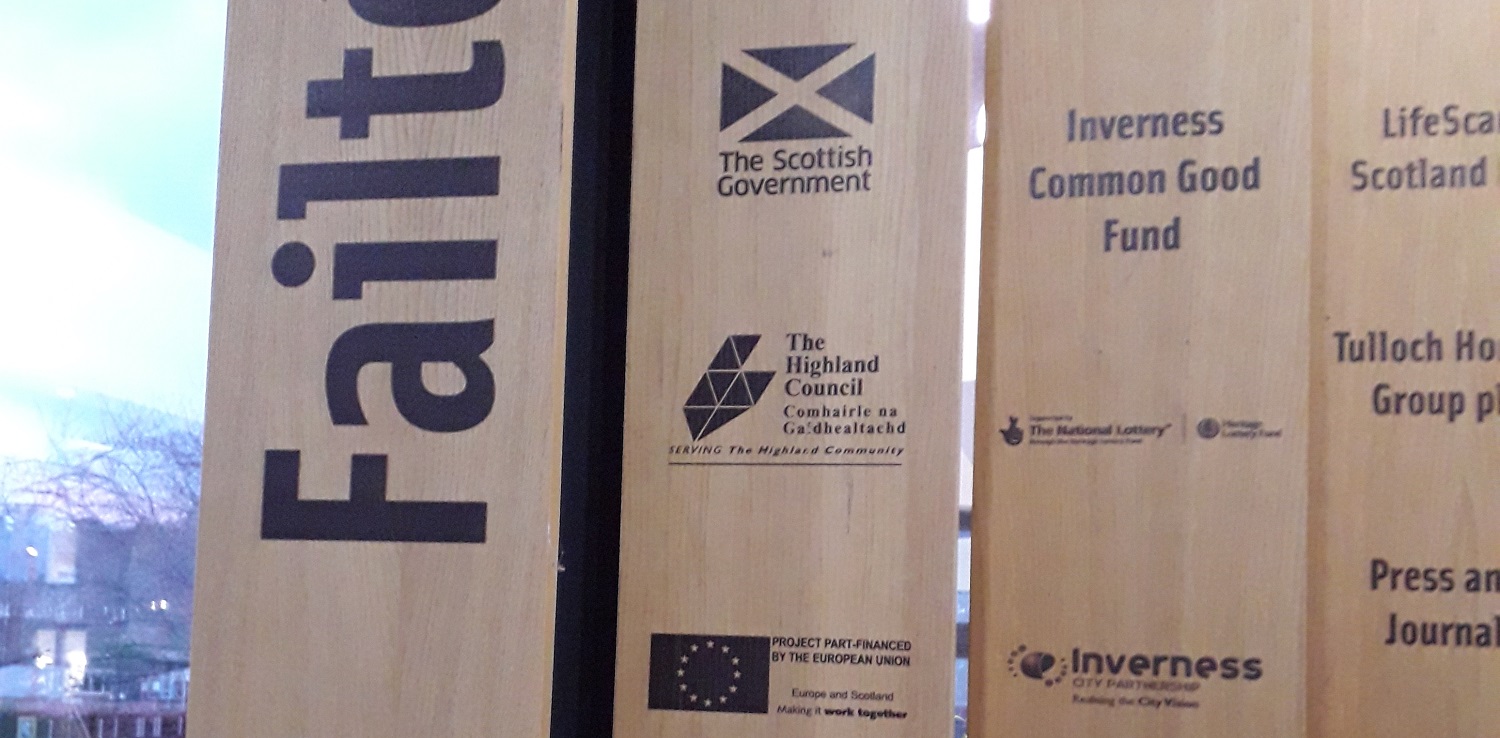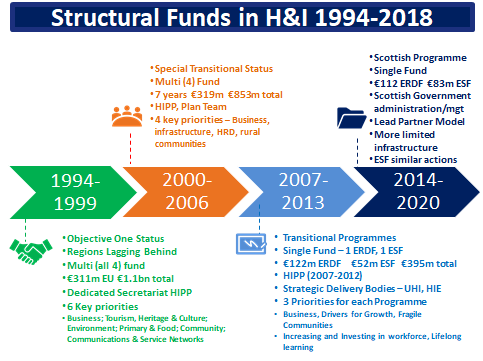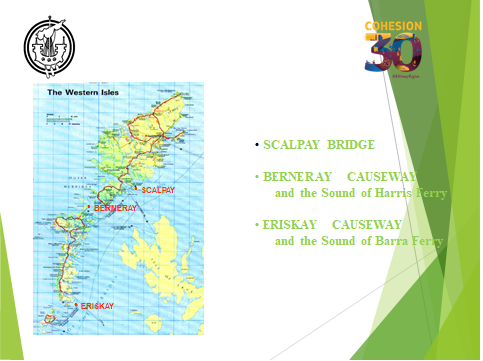European Structural and Investment Funds
2018 Annual Event for European Structural and Investment Funds
December 19, 2018 by Patrick Douglas No Comments | Category Events

On Thursday 29 November, representatives from lead partners and other ESIF stakeholders came to Eden Court in Inverness for the 2018 Annual Event to pay tribute to the success of structural funds in Scotland. Upon entering the venue, attendees might have spotted why Eden Court was an appropriate choice for the event – the venue’s redevelopment was supported by £2.87million from the European Regional Development Fund in the 2000-2006 programme!
Speeches
Minister for Trade, Investment and Innovation Ivan McKee MSP provided the keynote speech. In his speech the Minister recognised all the stakeholders who have played their part in delivering projects supported by European Structural Funding over 30 years of Cohesion policy, with particular highlight on those in the Highlands and Islands region.
European Commission Director of Communication, Budget & General Affairs at DG REGIO Dana Spinant wished attendees a successful day via a video message, and desk officers Joanne Knight and Evert Veltkamp were attending the event and spoke about the history of regional policy and the European Social Fund respectively.
Lorna Gregson-Macleod from Highlands and Islands Enterprise gave a presentation on “European Structural & Investment Funds in the Highlands and Islands – Meeting Challenges, Seizing Opportunities”. She gave an overview of the impact of the funds in the region since 1994, covering skills, energy, connectivity and tourism and much more. It was a challenge to fit so many achievements into a short presentation but Lorna succeeded, delivering an affecting tribute to everything that had been achieved via ESIF in the region.

Next we heard about two projects which have received funding. Murdo Murray was Director of Technical Services for Comhairle nan Eilean Siar during the construction of the Western Isles Spinal Route, and this project formed the basis of his presentation, “Cohesion and Connectivity in the Outer Hebrides”. He spoke humourously about the process to acquire the funding for such a mammoth infrastructure project, and how the route has created its own legacy, not only improving travel links for residents but also supporting new tourism opportunities like the Hebridean Way.
CEO of Cantraybridge College Jenny Liddell presented “A new model of social entrepreneurship”. This presentation explored how the college provides enterprise and business start-up training for autistic adults who want to launch their own micro-enterprises, supported by the European Social Fund. While previous presentations focussed on past achievements, Jenny’s session was a reminder to attendees of the effective projects that the funds continue to support.
Finally Linda Stewart, Director of European and International Development of the University of the Highlands and Islands, provided a presentation. It detailed the historic relationship between UHI and ESIF, describing how UHI would have struggled to establish itself as a major educational institution without the support of structural funds. This presentation also formed part of a public talk later in the day, where UHI staff and students discussed the impact of ESIF on the university and the region as a whole.
Slides from the day are available to view, as is our Twitter thread with photos from the day:
We're all set for the 2018 European Structural and Investment Funds Annual Event 2018 @EdenCourt in Inverness!
Delegates will soon gather to hear about 30 years of Cohesion policy & @EU_social @EUinmyRegion achivements in Scotland.#ESIFAnnual18 pic.twitter.com/WDFoecR0Ml
— ScotGovESIF (@scotgovESIF) November 29, 2018
Workshop sessions
There were two workshop sessions for attendees:
- Present: how do we collaborate better & spend rest of money wisely for 2014-2020 programme?
- Future: what are the policy priorities we need to keep going into the next fund?
At the session about the present, discussion topics included
- The need to communicate with each other better. Some LPs have good relationships with the MA, others less so, which might be because everything is now desk-based. SIs develop at different rates which can lead to inconsistency and a breakdown in communications. We need to build trust in each so open questions between LP and MA can be asked. We also need to improve how we communicate to people delivering projects on the ground.
- Partnership is key. Previously, it was possible to bring issues to the table and use joint-working to resolve them. LPs often try to protect SIs so they do not share what works well. We need to find a mechanism so that LPs can work together and not see it as a competition.
- How the programme’s structure affects delivery. Changes can come too late which causes problems. LPs are under pressure to work with delivery agents, but smaller organisations can be at a disadvantage. Can we create a structure that allows LPs to work more readily with smaller organisations?
At the session on future policy priorities, discussion topics included:
- Highlands and Islands’ status as a region. A continuing focus is on reducing regional inequalities, and the broad scale of the H&I means different solutions are needed across the region. If H&I is subdivided, would this lead to a competition between areas for funding?
- New funding models and methodologies. Could asking communities what they want and need (“participatory budgeting”) be used, especially for smaller projects? Could our priorities during the period of the funding programmes be adapted to respond to most pressing needs? How is funding aligned in Scotland to deliver the best outcomes?
- Islands’ unique needs. Would the Islands, who have historically done well out of European funding compared to other areas, continue to benefit in the same way in future? How do we identify the unique needs of areas like the Islands? How do we balance local needs with wider programmes?
- Connectivity and young people in the region. Institutions like UHI that train young people are essential to the future of the region to avoid a “brain drain”. Adequate telecommunications infrastructure is necessary to retain young people and businesses in peripheral communities, especially where market forces alone won’t solve the issue.
- ESF achievements need to be recognised. Projects have benefited from being in addition to core services and taking risks to deliver new activity. As such, there needs to be a recognition that these projects are expensive and sometimes risky because of unique needs of the region; the most marginalised in the communities require stable funding.
We look forward to continuing the discussion with lead partners in the new year on what the funds have and can achieve. Thank you to all attendees who contributed to a successful day.

Leave a comment